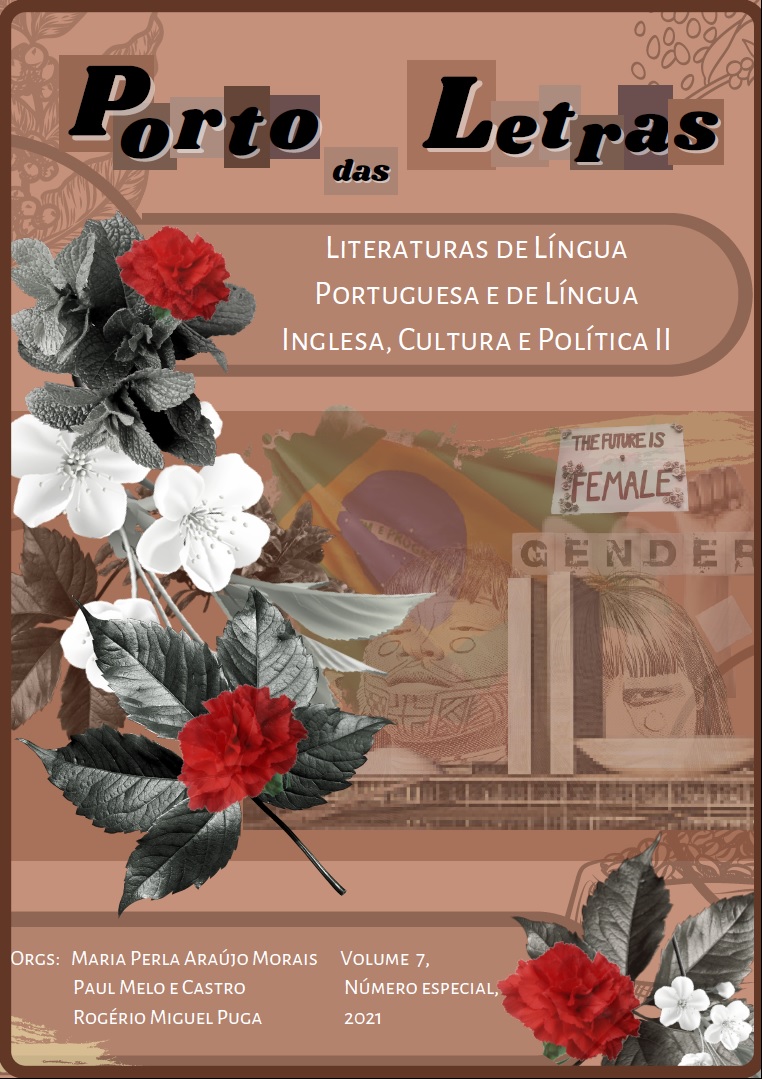DO PAPEL AO CRISTAL LÍQUIDO
A REPRESENTAÇÃO DO FEMININO NA OBRA DE ARTHUR CONAN DOYLE, DO ORIGINAL À ADAPTAÇÃO TELEVISIVA DA BBC
Keywords:
Sherlock Holmes, Arthur Conan Doyle, Feminismo, Romance Policial, Escândalo na BoêmiaAbstract
Sherlock Holmes' figure is known worldwide and has long been represented in reinterpretations and translations for the audiovisual medium. Both the original work and its adaptations reflect the society in which they were created. This line of thought guides this article in the comparative analysis between Sir Arthur Conan Doyle's original 19th-century short story “A Scandal in Bohemia” and its television translation for the BBC series Sherlock, in the episode “A Scandal in Belgravia”, now in the 21st century. The main elements to be compared are the female representation in the three main characters of the chosen productions (Irene Adler, Molly Hooper, and Mrs. Hudson) and whether they represent social stereotypes at both points in the timeline. For this, Beauvoir (1967), Massi (2011), and Stanković (2008) were used as the main theoretical foundation. In the dialogue between theory and object, it was sought to answer the questions asked at the beginning of the research, the main one being the definition of the convergences and divergences between the versions of the characters from the original story and the television series. In terms of final considerations, it was understood that there is indeed the stereotyping of the characters chosen in both situations and that these representations are befitting with the evolution of the popular feminist discourse and the zeitgeist (spirit of the time) in which they were created, even though they are both linked to Doyle's original work.
References
ANUNCIAÇÃO, Georgia. Feminismo como manobra de marketing: a ascensão da mulher na mídia. São Paulo: Publicação Independente, 2019. Versão digital sem numeração de páginas.
BEAUVOIR, Simone de. O Segundo Sexo: 2. A Experiência Vivida. São Paulo: Difusão Européia do Livro, 1967. 500 p.
DINIZ, Thaïs. F. N.. Tradução Intersemiótica: do texto para a tela. Cadernos de Tradução (UFSC), Florianópolis, SC, v. 3, p. 313-338, 1999. Disponível em: < https://periodicos.ufsc.br/index.php/traducao/article/view/5390>. Acesso em: 04 set. 2020.
DOYLE, Arthur Conan. Escândalo Na Boêmia. In: DOYLE, Arthur Conan. Sherlock Holmes. Vol. 1. Rio de Janeiro: Harper Collins, 2017. p. 249-271.
______. Memórias e aventuras: autobiografia de Sir Arthur Conan Doyle. São Paulo: Marco Zero, 1993. Tradução de Marcia Serra. 327 p.
HARBOUR, Berná Gonzalez. Una vida con Sherlock Holmes: los ensayos de Conan Doyle sobre literatura y escritura reflejan un cierto hartazgo de su propio detective. El País. 2017. Disponível em: <https://elpais.com/cultura/2017/08/21/actualidad/1503315459_069366.html>. Acesso em: 07 set. 2020.
HRDY, Sarah Blaffer. The Woman That Never Evolved, Cambridge, MA: Harvard University Press, 1981. In: SAINI, Angela. Inferior é o caralho. Rio de Janeiro: Darkside Books, 2018. p. 238.
MARTINS, Marina. Quando o feminismo foi um aliado na história da moda: um retrato de como a vestimenta representou a luta das mulheres pela igualdade social desde o século XIX. Geledes. 2016. Disponível em: <https://www.geledes.org.br/quando-o-feminismo-foi-um-aliado-na-historia-da-moda/>. Acesso em: 08 set. 2020.
MASSI, Fernanda. O romance policial do século XXI: manutenção, transgressão e inovação do gênero. São Paulo: Cultura Acadêmica, 2011. 169 p.
MOFFAT, Steven. A Study in Pink: Script Sherlock (BBC). 2018. Transcrito por Ariane DeVere. Disponível em: <https://genius.com/Sherlock-bbc-a-study-in-pink-script-annotated>. Acesso em: 20 maio 2020.
MOFFAT, Steven; GATISS, Mark. Sherlock: The Reichenbach Fall – live chat with the co-creators: Highlights from the Sherlock live chat with Steven Moffat and Mark Gatiss, the co-creators of the British TV hit. [Entrevista cedida a] Matt Wells. The Guardian, Londres, 2012. n.p. Disponível em: https://www.theguardian.com/tv-and-radio/tvandradioblog/2012/may/21/sherlock-reichenbach-fall-live-chat. Acesso em: 06 set. 2020.
PRIMORAC, Antonija. 2013. The Naked Truth: The Postfeminist Afterlives of Irene Adler. Journal of Neo-Victorian Studies. n. 6. p. 89-113, Disponível em: <https://www.researchgate.net/publication/296195462_The_Naked_Truth_The_Postfeminist_Afterlives_of_Irene_Adler>. Acesso em: 06 set. 2020.
REIMÃO, Sandra Lúcia. O que é Romance Policial. São Paulo: Brasiliense, 1983. p. 4-42. Disponível em: <https://www.academia.edu/26905359/O_que_%C3%A9_Romance_Policial_livro_>. Acesso em: 01 maio 2020.
SAINI, Angela. Inferior é o caralho. Rio de Janeiro: Darkside Books, 2018. 320 p.
SILVA, Jacilene Maria. Feminismo na atualidade: a formação da quarta onda. Recife: Publicação independente, 2019. Ebook sem numeração de páginas.
SOBRE CINEMA E SEMIÓTICA | um papo com Prof. Wilson Ferreira. [S.I.]: Canal CONACINE - Congresso Nacional de Cinema, 2017. (8 min.), son., color. Disponível em: <https://www.youtube.com/watch?v=sBV8Z6p8HhY>. Acesso em: 04 set. 2020.
STANKOVIĆ, Maja. TV Series or Not? Am Journal of Art and Media Studies, [S.L.], n. 17, p. 1-13, 16 out. 2018. Disponível em: <https://fmkjournals.fmk.edu.rs/index.php/AM/article/view/282>. Acesso em: 01 set. 2020.
THE Strand Magazine. 2020. Disponível em: <https://strandmag.com/>. Acesso em: 23 maio 2020.
UM ESCÂNDALO em Belgrávia (Temporada 2, ep. 1). Sherlock [seriado]. Escrito por Steven Moffat. Direção: Paul McGuigan. Produção: Sue Vertue. Londres, Reino Unido: BBC Wales, 2012. Disponível em plataformas de streaming (89 min).
WILSON, Victoria; MARTELOTTA, Mário Eduardo. Arbitrariedade e iconicidade. In: MARTELOTTA, Mário Eduardo et al (org.). Manual de linguística. 2. ed. São Paulo: Editora Contexto, 2016. p. 72-73.
WOOLF, Virginia. Profissões para mulheres e outros artigos feministas. Porto Alegre: L&PM Editores, 2012. Ebook sem numeração de páginas.
WOLF, Naomi. O Mito da Beleza: como as imagens de beleza são usadas contra as mulheres. Rio de Janeiro: Rocco, 1992. Tradução de Waldéa Barcellos. 439 p.
Downloads
Published
How to Cite
Issue
Section
License
Os autores concordam com os termos da Declaração de Direito Autoral, que se aplicará a esta submissão caso seja publicada nesta revista (comentários ao editor podem ser incluídos a seguir).

